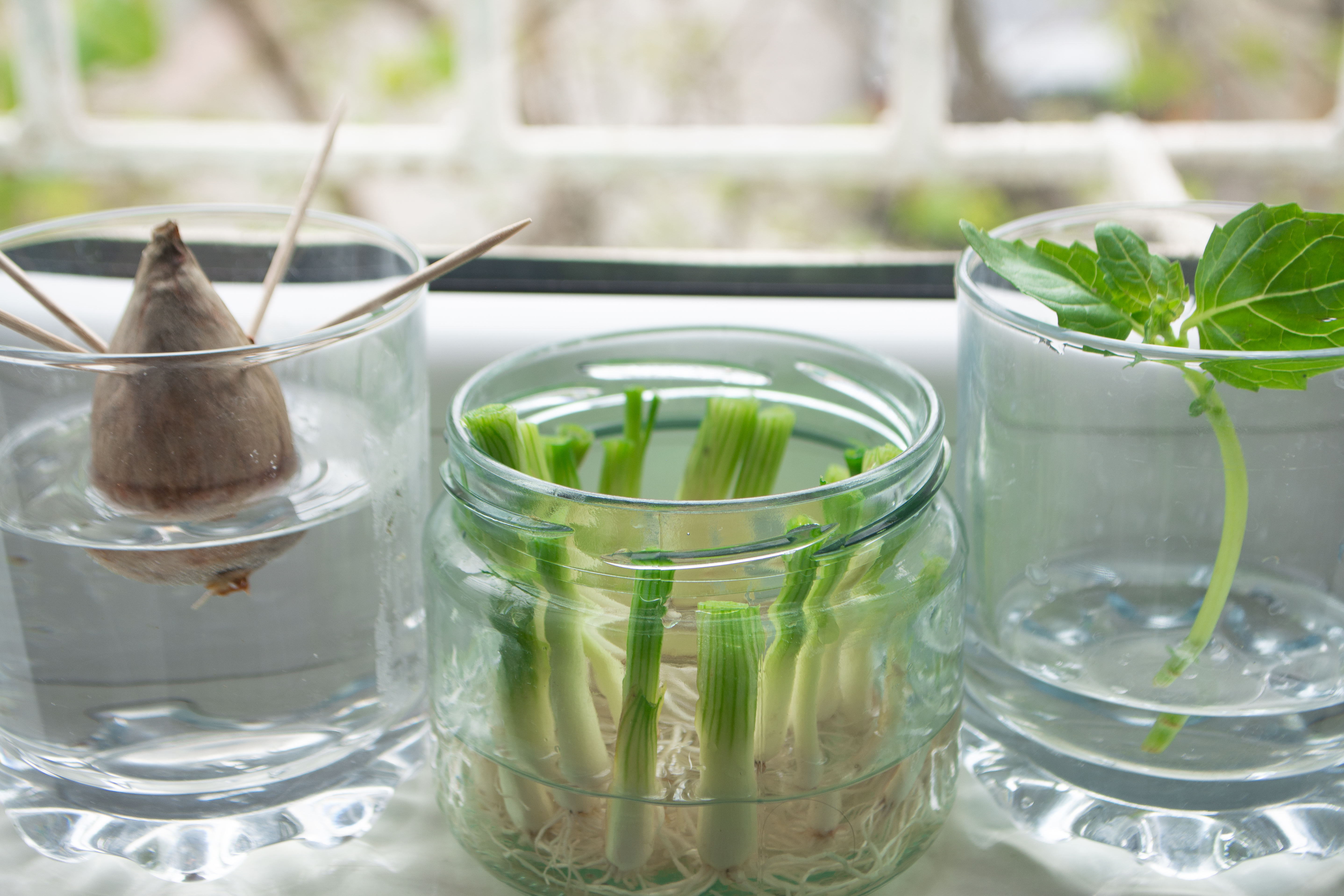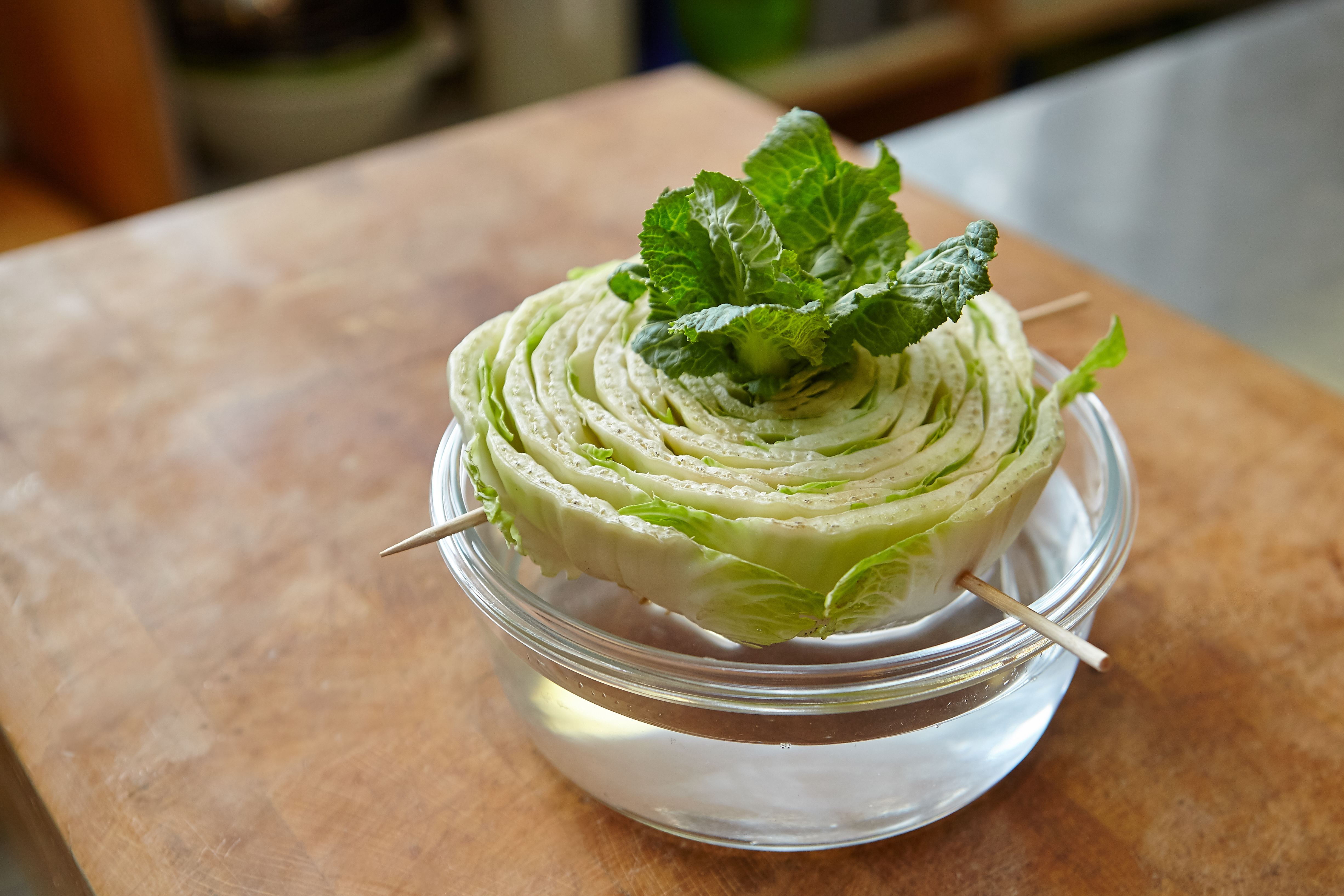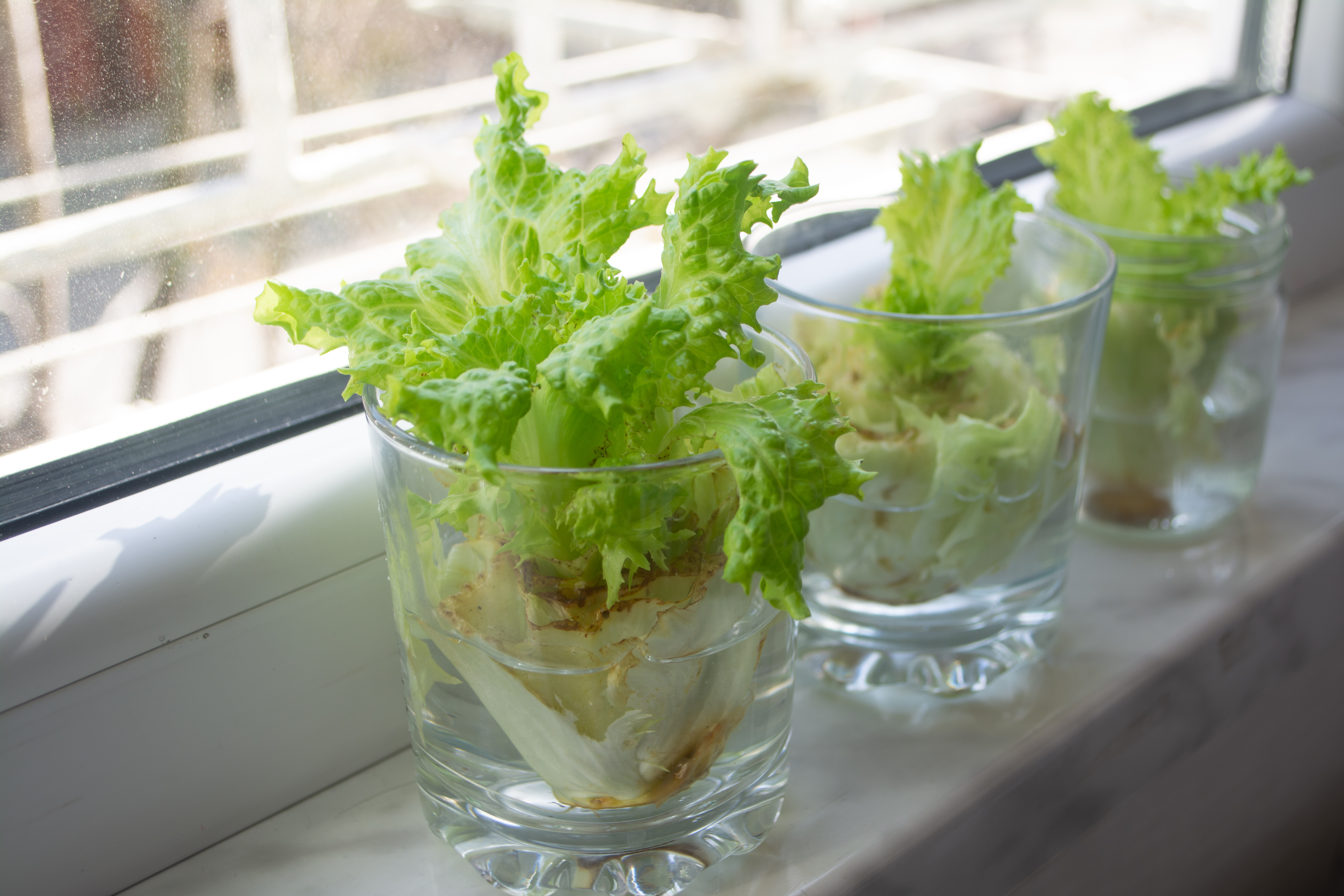GROWING VEGETABLES FROM KITCHEN SCRAPS
Several years ago, I spent a few weeks in September away from home. It was the peak of harvest season and I missed my garden, so when I trimmed off the tops of the beets I had bought at the farmers market, I placed them in a sauce of water to see if they would grow. I didn't know it then, but I had joined the ranks of those who sprout their kitchen scraps.
The current pandemic has combined with interest in food sustainability and zero waste issues and, as a result, kitchen scrap gardening is booming in popularity. It’s easy, can be done on a sunny windowsill, and requires no specialized equipment—not even potting soil. It also provides both the delight of getting something from nothing, and a fascinating lesson in plant growth suitable for children and adults alike (kitchen scrap sprouting might just have replaced the Chia Pet project of the 1980s). Once you play around with sprouting your food scraps, you might get hooked.
To get started all you need is a shallow bowl, saucer, or jar, and some vegetable scraps that might otherwise be headed to the compost or garbage. Pour about half an inch of water in the saucer or bowl and place it in a sunny spot, away from direct heat (a heater vent or radiator might cause the vegetables to wilt or cook) and watch the shoots grow.
Below are some of the most common and easiest items to sprout. In some cases, it is possible to transfer your sprouting scraps to the garden, or to a window box, but here we’re focusing on indoor, soil-free sprouting. Give it a try, it’s easier than you think.
ROOTS
Root vegetables are one of the simplest items to re-sprout. When you are trimming your roots, leave a thick slice of the vegetable (about one inch) attached to the sprout site and place the bottom in water. Don’t submerge the entire vegetable in water, about half an inch at the bottom is fine. Check the water level daily and add more as needed. While this will not regrow the root portion of the vegetable, the tender greens that sprout can be added to soups and salads.
The best root vegetables for re-sprouting are beets, radishes, turnips, and carrots (the greens are edible and taste like carrot roots). Harvest lightly from around the outside of the shoots with a scissors and they will continue to produce for several weeks. If the water gets cloudy or unappealing, remove the sprouts (place them on a damp towel), wash out your receptacle, and refill with fresh water before replacing your sprouting veggies.







